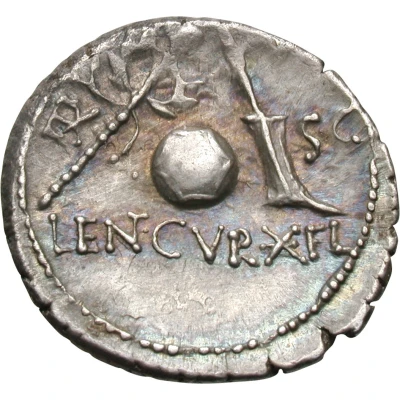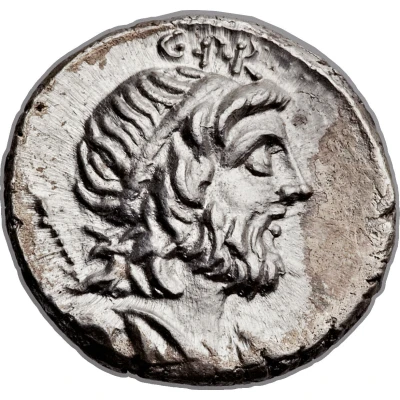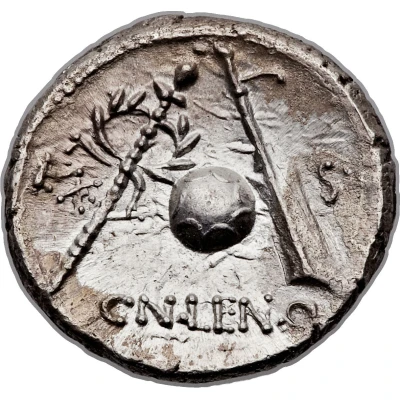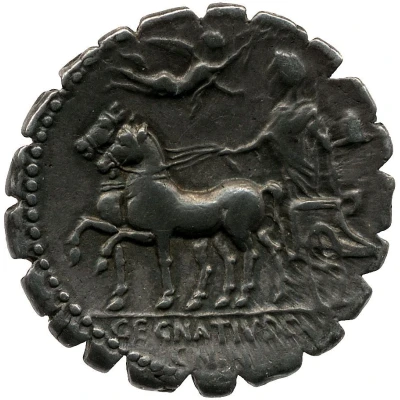


© Heritage Auctions
Denarius Cornelia: Gnaeus Cornelius Lentulus Marcellinus; G•P•R / EX•S•C LEN•CVR•Ӿ•FL 76 BC - 75 BC
| Silver | 3.91 g | 19 mm |
| Issuer | Rome › Roman Republic (509 BC - 27 BC) |
|---|---|
| Period | Republic (509 BC - 27 BC) |
| Type | Standard circulation coin |
| Years | 76 BC - 75 BC |
| Value | Denarius (1) |
| Currency | Denarius of 16 Asses (141 – 27 BC) |
| Composition | Silver |
| Weight | 3.91 g |
| Diameter | 19 mm |
| Shape | Round (irregular) |
| Technique | Hammered |
| Orientation | Variable alignment ↺ |
| Demonetized | Yes |
| Updated | 2024-10-06 |
| Numista | N#66915 |
|---|---|
| Rarity index | 100% |
Reverse
Globe between wreathed sceptre and rudder; on either side, inscription.
Moneyer mark in exergue with NT in monogram.
Script: Latin
Lettering:
EX•S•C
LEN•CVR•Ӿ•FL
Unabridged legend:
Ex Senatus Consulto
Gnaeus Lentulus Quaesto
Translation:
By Special Decree of the Senate
[Gnaeus Cornelius] Lentulus [Marcellinus], curator of the casting of denarii
Edge
Plain
Comment
Ӿ monogram is here used to replace the word denarius or its abbreviated form DEN; the associated title seems to be inherited from the early Rome's currency period.The gens Cornelia was one of the most distinguished Roman gentes, and produced a greater number of illustrious men than any other house at Rome. Servius Cornelius Cossus Maluginensis was first to achieve the consulship in 485 BC. The gens was a major contributor to the highest offices of the Republic, and contested for consulships with the Fabii and the Valerii from the 3rd century BC. Over thirty percent of all consulships were held by men from Cornelii; several great commanders also came from this family.
Interesting fact
One interesting fact about this coin is that it features a rare and unique design on its reverse side. Instead of the usual depiction of a Roman deity or mythological figure, it shows a portrait of Cornelia Africana, the mother of the Gracchi brothers, who were famous Roman politicians and reformers. This design was meant to highlight the importance of family and lineage in Roman culture, and it is a distinct departure from the usual iconography found on Roman coins of that time.



